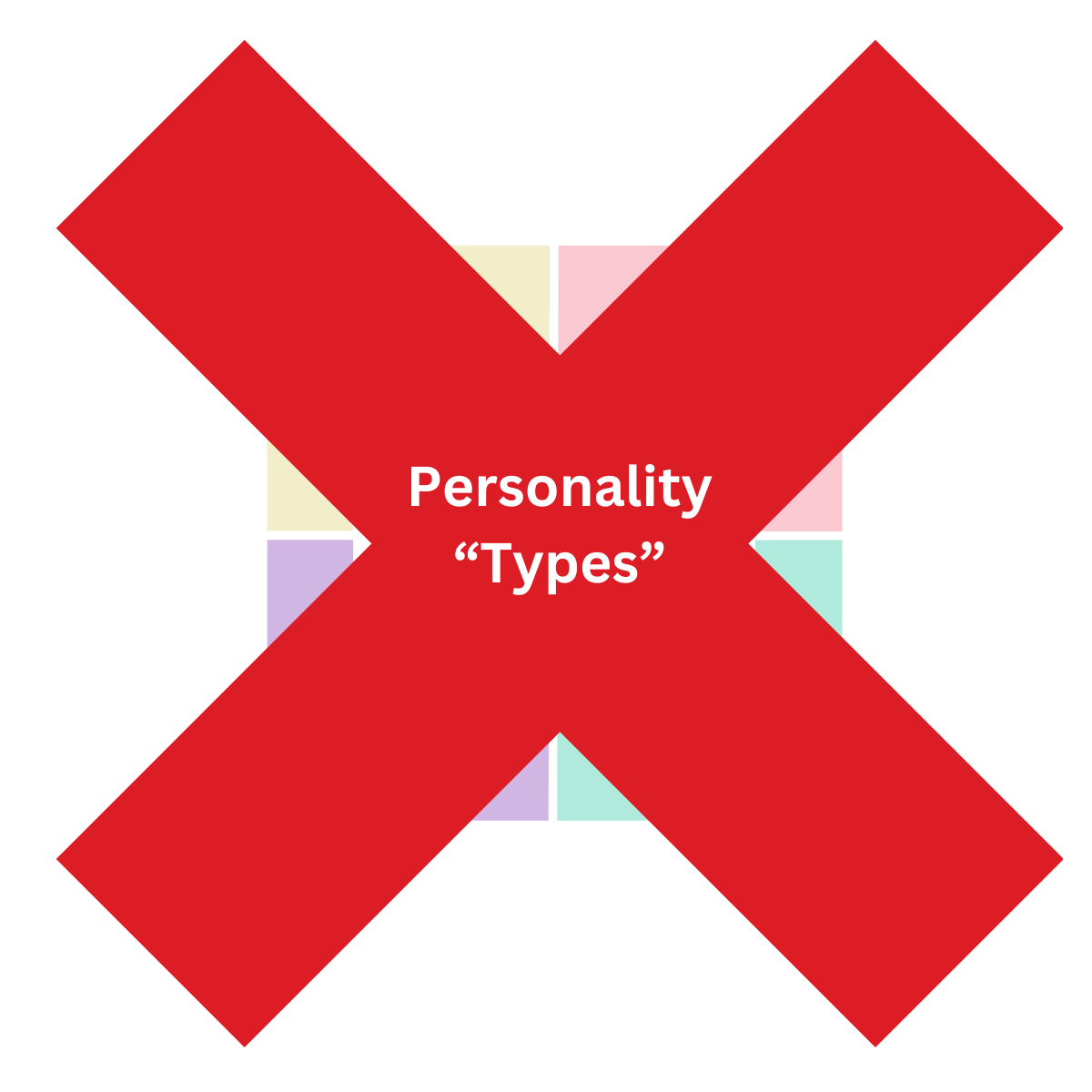In 2013, Adam Grant wrote an article for Psychology Today called “Goodbye to MBTI, the Fad That Won’t Die.” Unfortunately, it seems like little progress has been made between then and now.
The Problem
There is overwhelming consensus among personality researchers that personality is hierarchically structured and consists of at least five broad and essential domains: Emotional Steadiness, Agreeableness, Conscientiousness, Intellect/Openness, and Extraversion. Commonly referred to as “The Big Five” or the Five-Factor Model of Personality, it has been the dominant paradigm among personality researchers and Industrial and Organizational psychologists for around thirty years. Unfortunately, the corporate world has been much slower to fully accept and appreciate this model, as evidenced by the continued widespread use of the MBTI and similar measures that group people according to types.
Top 5 Reasons to Stop Using Type Indicators
#1 – The theory underlying The Big Five is based on rigorous science, not pseudoscience.
The Myers-Briggs Type Indicator was created by a mother and daughter, Katharine Cook Briggs and Isabel Briggs Myers. Neither had any formal education or training in psychology or psychometrics. Both were influenced by the 1921 book called Psychological Types by a psychodynamic psychiatrist and initial follower of Freud, Carl Jung. After becoming influenced by that book, they then spent two decades “type watching,” (whatever that means) before creating MBTI. Outside from his work serving as the basis for the MBTI, Jung’s theories have not aged well and are not taken seriously by researchers today.
On the other hand, The Big Five was discovered not anecdotally, but through empirical means by employing a statistical procedure known as factor analysis. This process can uncover hidden relationships between a countless number of variables and reduce them to a much smaller set of factors. When researchers studying the lexical hypothesis did this to the thousands of personality-related adjectives in our language, they were reduced to five (mostly) independent categories. This has since been replicated countless times by different researchers using different approaches, and the same five domains have emerged across multiple languages and cultures, suggesting that they are universal.
#2 – There’s a big problem with personality “types”.
It is widely accepted in psychology that all personality traits are continuous variables, not categorical ones. This means that if you measure enough people in the population, you will have individuals who fall at the 1st percentile all the way up to the 99th percentile. There is no magical point along that continuum in which someone becomes a different type and – all of a sudden – has significantly different ways of thinking, feeling, or acting. The MBTI, however, has established cutoff scores that are used to force fit people into one of 16 personality types, creating false dichotomies. Not surprisingly, research has shown that this approach results in frequent classification errors and up to 75% of participants wind up with a different type when they retake the test. Since personality is relatively stable in adulthood, this should definitely not be happening!
#3 – No, really, types are not good!
In actuality, personality is not only hierarchically structured, but multi-faceted. In addition to the Big Five Factors, there are two distinct Aspects at the level immediately below them and a larger number of Facets at the level immediately beneath those. As each has a unique component, there are an almost endless number of trait level combinations possible, making people’s uniqueness like that of snowflakes. By labeling people, force-fitting them into a box that may not even be the right one, and then attributing certain characteristics to all people in that box, the typing process sounds an awful lot like stereotyping. And, similar to that, it is likely to promote misunderstanding.
#4 Unlike the MBTI, The Big Five actually predicts many important work outcomes.
Based on the above, it should come as no surprise that The Big Five domains have been shown in countless studies done by independent researchers to predict important outcomes at work. This has included overall job performance, turnover, leadership emergence and effectiveness, training success, job satisfaction, organizational citizenship behaviors, counterproductive work behaviors, driving change, and teamwork, as well as many others.
In contrast, The MBTI has limited to no quality evidence support its predictive validity. If the test is unable to predict any meaningful outcomes, one has to question its usefulness, even for something like team building exercises.
#5 – Unlike the MBTI, The Big Five can be used for the hiring process.
Because the Big Five have been shown to predict many important work-related outcomes, as well as one domain (i.e., Conscientiousness) predicting job performance in all roles, it should be a core part of any well-designed selection system.
The publishers of the MBTI, on the other hand, say that the measure is not suitable to be used for hiring. With all the above limitations, it is easy to see why using the MBTI for selection would not be legally defensible.
The Conclusion
Much like bloodletting is no longer considered a viable medical treatment, we should relegate the MBTI to being a quirky footnote in our history. Our understanding of the science of personality has grown leaps and bounds over the last hundred years and the personality measures we use should that reflect that.
